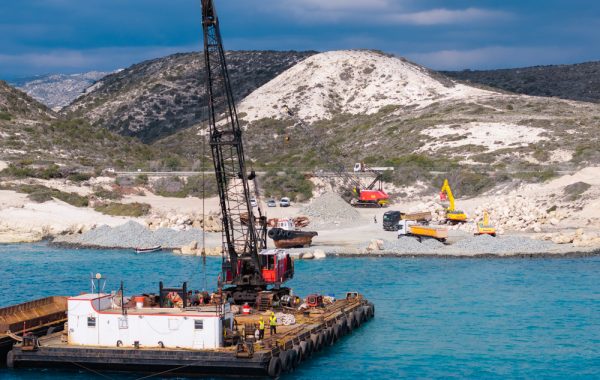2020 was the year when our societies were shaken to their core. The last 12 months have been incredibly challenging for all and have affected all of us. But if there’s a silver lining to all this, it is that this year made us appreciate what is really important. It showed us a different way of life, one that is slower, and perhaps driven less by selfishness and consumption and more by empathy and collectiveness. It made us even more awake to nature and pushed us to become even more appreciative of the natural world and the value in cherishing and protecting it, for the good of all. As the year comes to an end, we reflect on some of the things that we achieved in 2020, with your support, and despite all the challenges.
1. We encouraged young and old to connect with nature

With our planned events and field trips cancelled and schools closed, we increased our online presence so that young and old could stay connected to the natural world. During the spring lockdown, we organized a unique and fun birdwatching race from home, encouraging people to connect with nature through the birds – either by sitting by the window, on the balcony or in the garden. The success of this race led us to organize another similar event, two days after Christmas. We also shared various activities, crafts, games, videos and documentaries to keep children busy and creative at home, while learning about the wonderful world of birds and nature. Finally, in autumn, we published our first issue of “Skalifourta Junior”, a children’s magazine for our junior members aged 7-12 years, currently published only in Greek.
2. Our message reached over 120.000 people

When in October we became witness to a terrible wildlife crime in the Larnaka district, where dozens of Bee-eaters and other protected bird species were illegally shot from the sky, we reported it immediately to the authorities and condemned the incident on social media and in the press. This received a huge response and there was a public outcry condemning this incident. As a result, we gave numerous interviews on radio and TV regarding the incident, thus putting more pressure on the authorities to take a hold of the situation and enforce the law. We remain committed to keep putting pressure and ensure that the law is properly enforced to make such horrific incidents a thing of the past.
3. More and more nest boxes occupied, and not just by Barn Owls
Since 2015, we have been installing Barn Owl nest boxes in agricultural areas in coordination with local communities and organized groups. Since then, we have installed more than 65 Barn Owl nest boxes across Cyprus. And this year’s nest box monitoring had some very positive results. Out of the 61 nest boxes that we checked this year, 31 nest boxes showed signs of occupation (owl pellets present) and 23 nest boxes have been occupied: twelve boxes by Barn Owls, eight by Cyprus Scops Owls, one by Common Kestrel, one by European Roller and one by House Sparrow. The fact that so many owls have located the nest boxes and a good number have chosen to breed in them gives great satisfaction, both to us but also for the local communities and the farmers hosting the boxes in their fields. It is encouraging and rewarding to see our efforts, and those of governmental departments promoting this method, bringing results. There is increased interest from local communities and other groups to participate in this project and we look forward to seeing more communities adopting this method and reducing poison use in 2021.
4. We contributed in the publication of the 2nd European Breeding Bird Atlas

The second European Breeding Bird Atlas (EBBA2) is probably the largest citizen-science project in Europe with up-to-date information on the breeding distribution and abundance of all 596 native and non-native bird species in Europe. BirdLife Cyprus was the national coordinator in Cyprus for the project, which for the first time included the island in a European Breeding Bird Atlas (Cyprus was not included in the first atlas). In Cyprus, more than 90 volunteers contributed their time and effort over 5 years to collect a high quality dataset that covers the entire island, documenting the distribution of the around 100 species that breed here. This Atlas is a keystone publication that should guide future conservation work in Europe. It helps conservationists and policymakers understand the changes in the distribution of bird species over the years and so it clearly highlights where species conservation and habitat restoration activities should happen in our region.
5. We completed our breeding birds monitoring during the spring lockdown

The full lockdown and curfew that were imposed during the spring months coincided with the height of the breeding season. We were determined not to let this stop us from carrying out our Common Breeding Bird Monitoring Scheme. Thankfully, bird monitoring is a very “sanitary” activity, since surveys are a solitary activity and each volunteer is assigned one or more survey locations that are usually a good distance away from inhabited areas and urban centres. Each of our volunteers was provided with all the necessary paperwork and given strict instructions on following the regulations in place, while regular check-ins were done and plans amended in response to the rapidly changing circumstances during the lockdown. The extra logistical work was well worth the effort, as it meant that we were able to successfully carry out the Common Breeding Birds Monitoring scheme for 2020, while fully complying with public health regulations and social distancing rules.
As we look to 2021 with hope, we commit ourselves to another hard-working year for birds and nature in Cyprus and beyond. We hope you will join us on this journey. Find out how you can become a member and support our work here.





